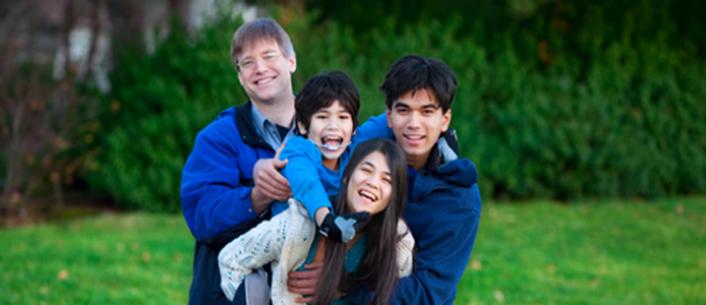- Home
- Play & Learn Home
- Online Enrichment
- Experience Modern Israel
- Israel It's Complicated
- Jewish and Me
- Jewish Holidays Jewish Values
- Jewish Values in Genesis and Jewish Values in Exodus
- Min Ha’aretz
- Our Place in the Universe
- Simply Seder
- The Prophets: Speaking Out for Justice
- Making T'filah Meaningful
- Make, Create, Celebrate
- Yom Haatzmaut Resources
- Hebrew Apps
- About The OLC
- What is the OLC?
- Introduction
- Get Started
- Resources
- OLC Content
- Parent Materials
- See My OLC Classes
- Store
We're in the Inclusive Mindset. Now What?
Written by Behrman House Staff, 24 of February, 2015
Eight Ways to Build an Inclusive Religious School Program for Students Who Learn Differently
A Young Girl Examines Inclusion
February is Jewish Disability Awareness Month and we have been working hard to help congregations commit to inclusion. Where do we go after the commitment?
In a recent article in The Jewish Weekly by Michelle Steinhart, inclusion is put to the test.
"As educators and community leaders, we work hard to create inclusive environments," Steinhart writes, "But it's up to all the other individuals in that environment to set the tone."
Take a moment and ask yourself, have you set the tone?
You can make sure you're not inadvertently undermining the commitment to inclusion with these questions:
- How do we react when we see a child - with or without special needs - having a tantrum in public?
- At family events or other social gatherings, do we offer help to individuals who seem to be struggling?
- Do we stare? Make snide comments? Judge?
"If we are honest, we'll admit that there is room for improvement," Steinhart said.
To help make our community more inclusive Steinhart compiled a few tips:
- When you see a person who is different, a smile or friendly greeting can go a long way toward making that individual and their family welcome.
- If it is a family member, friend, or community member, let them know that their presence is important to you. If they are not able to participate in some function (services, Shabbat dinner, Passover seder*, etc.) because of their special circumstance, ask how you can accommodate them and adjust accordingly.
- When you speak to a family member of a person with special needs, don't avoid the topic. Ask about that person, not just about the rest of the family.
- When you're at a family or social gathering, in synagogue or anywhere else, and you see someone struggling - don't stare. Offer a smile, a compassionate glance, and even a helping hand. They may not need help with their special needs child - and you might feel hesitant to get involved - but they might need some support for their child at the moment.
- Be a friend. Let the individual set the tone and follow their cues. Listen patiently and be supportive. Let them know you are there for them.
- Don't judge. We all have our own battles to fight and everyone is doing their best.
Michelle Steinhart has been working in Jewish Education and Jewish Special Education for over 20 years and her oldest son, Avi has an autism spectrum disorder.
You can read Steinharts full article here.
For conversation starters, resources, and more on inclusion, follow our 'Commit to Inclusion' Pinterest board.
 *This Passover you can celebrate with families with children of all abilities and disabilities with the new Gateways Haggadah. This concise Haggadah is respectful to all participants, whatever their abilities, to ensure that all can take part meaningfully in a complete Passover seder.
*This Passover you can celebrate with families with children of all abilities and disabilities with the new Gateways Haggadah. This concise Haggadah is respectful to all participants, whatever their abilities, to ensure that all can take part meaningfully in a complete Passover seder.
For more information and to order your copy, click here.
Quantity discounts available for religious organizations.

